
growth
It was in 2015 when everything changed for news publications. For the first time in history, newspaper circulation revenue was higher than advertisement revenue. Until then, 80% of a paper’s revenue was from ads. The internet was taking over and publications started establishing a strong online presence.
“Print used to be one of few traditional marketing channels and often the one that was the most ubiquitous for branding and logical choice for all marketers,” Larry Kilman, the then secretary of WAN-IFRA had noted.
In short: the business model of newspapers had changed for good. They now relied on the audience, not advertisers.
This was not the only change. Mediums were changing. From print to online. How do newspapers get more readers online? As with all businesses, they looked to SEO.
In the last decade, we see more and more mainstream newspapers investing in Search. Forbes recently hired an SEO director, and many Indian newspapers have dedicated SEO teams or they work with agencies.
Table of Contents:
From this one profile page on Elon Musk, Forbes.com gets 643.8K organic traffic from the US every month. Forbes, known for its reports and data on billionaires, millionaires, employed programmatic SEO and created more than 30,000 pages of profiles on the rich.
Thanks to SEMrush, here’s a small snippet into the amount of organic traffic the top pages bring to the website from the US. (All traffic data referred to here are average monthly numbers)
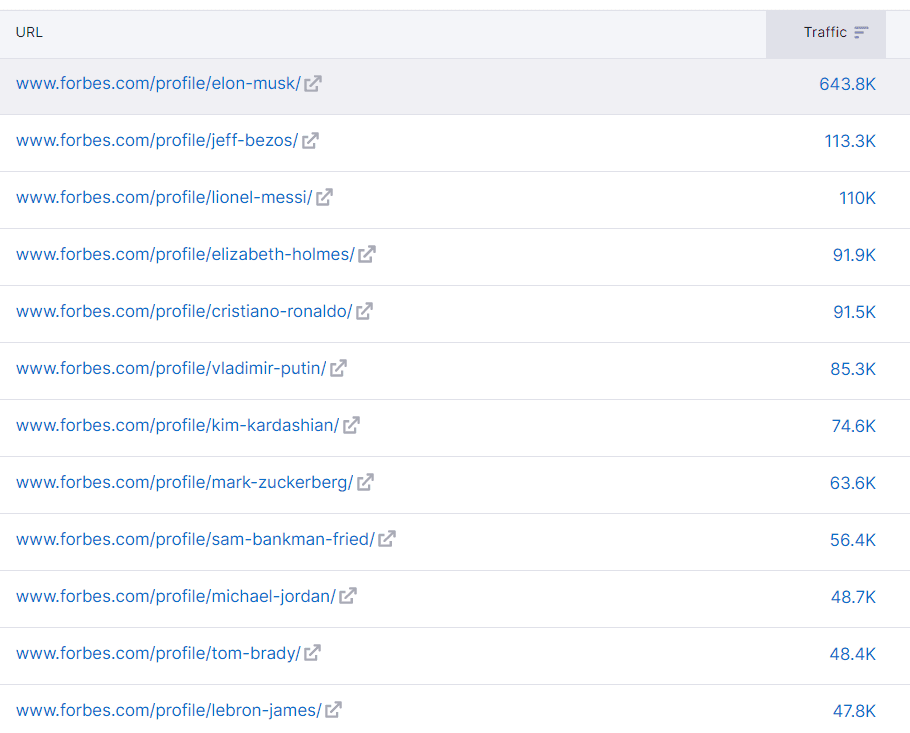
These pages also contain a list of news articles on that person, apart from the rich data they already carry.
Another behemoth, Bloomberg also employs a similar technique and has profile pages on billionaires.
This media organization also has a ‘company explorer’ section on its website with a whopping 590k+ pages.
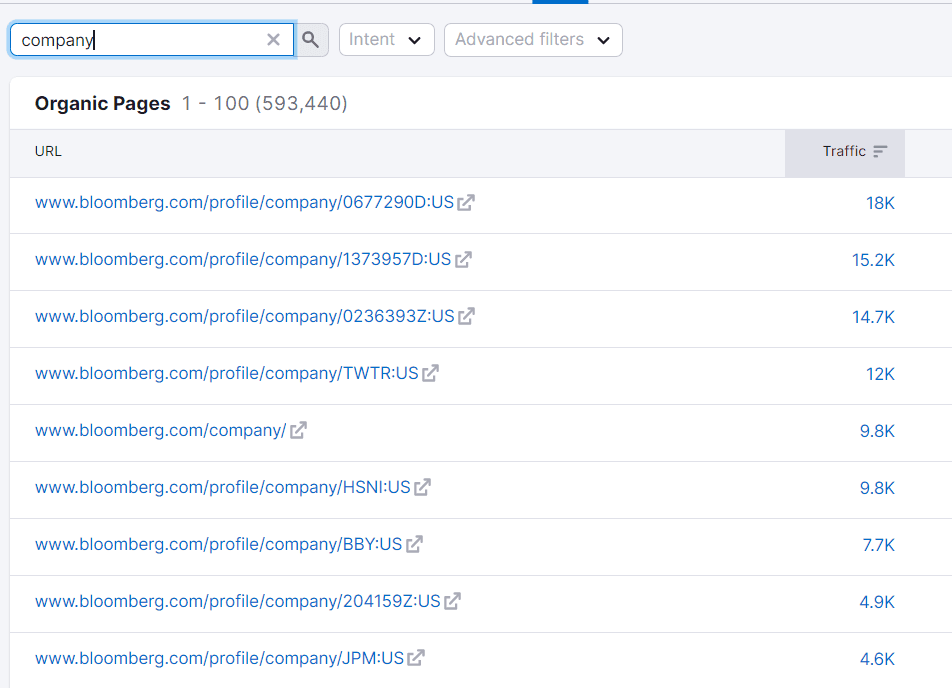
Closer home, OneIndia.com, a top-performing digital publication with a presence in multiple Indian languages is putting to use the election data it has.
They have more than 6000 pages on various election results, from assembly to by-elections. Their pages on the list of MLAs also are performing well.
The page on Huzurabad election results gives the website more than 140k organic traffic from India. Here’s a (surprising) breakdown of the keywords driving such huge numbers.

“This is why SEO is interesting, it gives an insight into how people search. Sometimes I would think people would use a certain term to look for information, but Google Trends would prove me wrong,” says Prasanna RS, Assistant Editor at the new-age digital publication South First.
At Southfirst, SEO is being taken very seriously as they are a relatively new media house. They use tools like Google Trends and SEMrush to identify keywords (with less competition). Take for example, a story on the Karnataka government’s move in prioritizing the mental health of pregnant women. Prasanna used tools to realise searches for ‘thayi card’ were much higher than ‘mental health of pregnant women’. And the article was optimised accordingly. Today, it ranks in the second position for the keyword thayi card (Search volume: 1900, Difficulty:19)
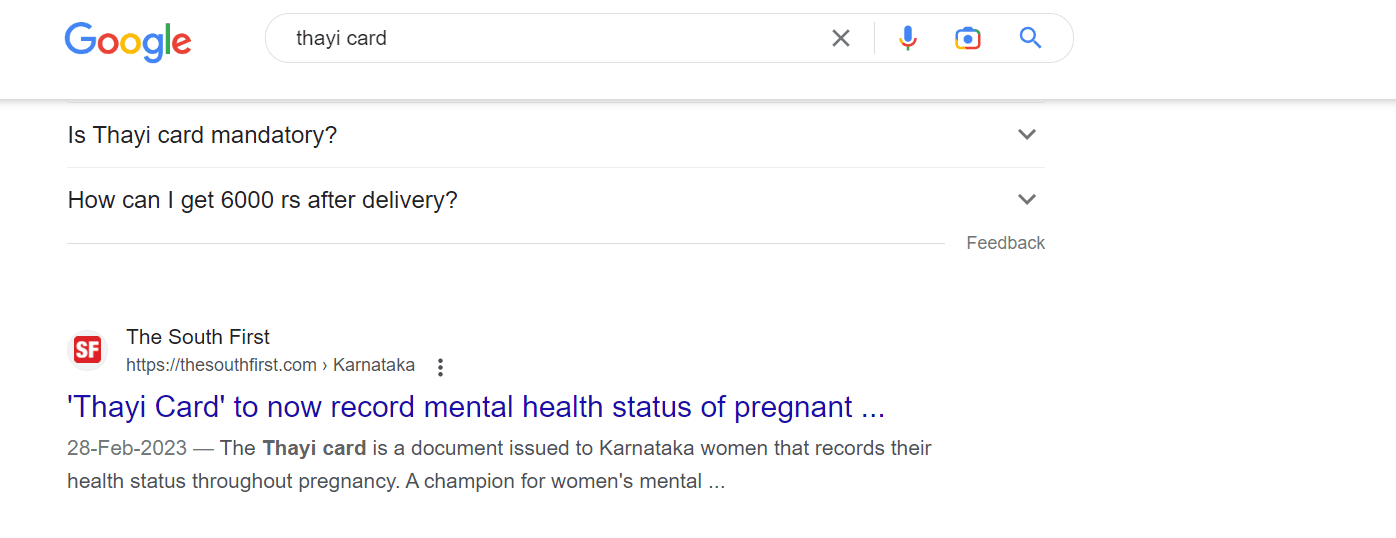
Coming back to how OneIndia uses programmatic SEO to attract users organically to its website. Their on-page SEO also seems to be very strong. For example,
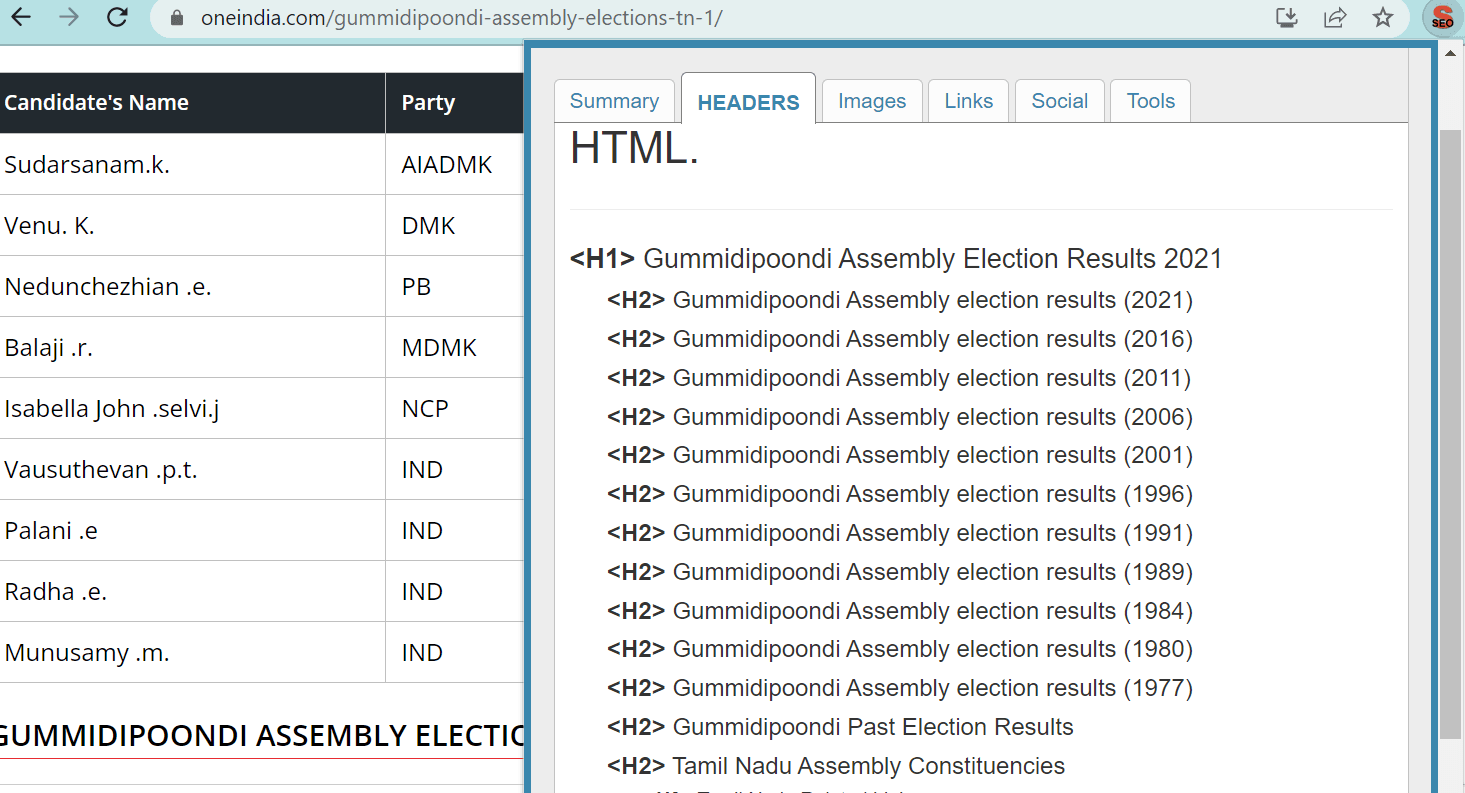
They have optimized their page to include election results of all years.
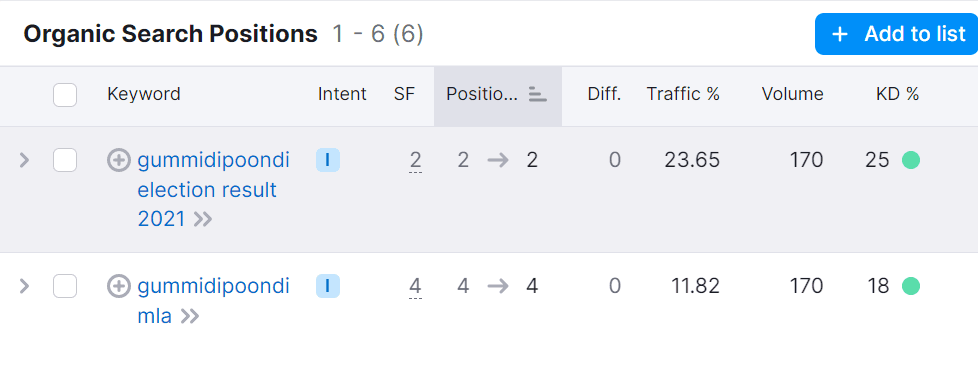
They have serious competition from Indian Express, ABP and other traditional media orgs but OneIndia seems to have gotten the programmatic SEO game right.
About a year ago, the wildly popular word game was bought by the New York Times for $3 million.
Want to know how much organic traffic it brings to the website?
42.5 million a month, just from the US.
NYT gets a total of 117.9 organic traffic from the US. Wordle gets about 36% of the organic traffic.
This is where we think about the original premise. The shift in the business model that puts the audience first and forces publications to think about monetizing subscriptions.
“At a $US3 million purchase price, the cost of Wordle could be recovered within a year if fewer than 10 percent of daily players add a NYT subscription. Wordle players who don’t want a full subscription might still be attracted to the NYT’s Games package for $US40 a year,” entrepreneur Adir Shiffman wrote in the Australian Financial Review.
In fact, a good chunk of NYT’s organic traffic comes from puzzles and crosswords.
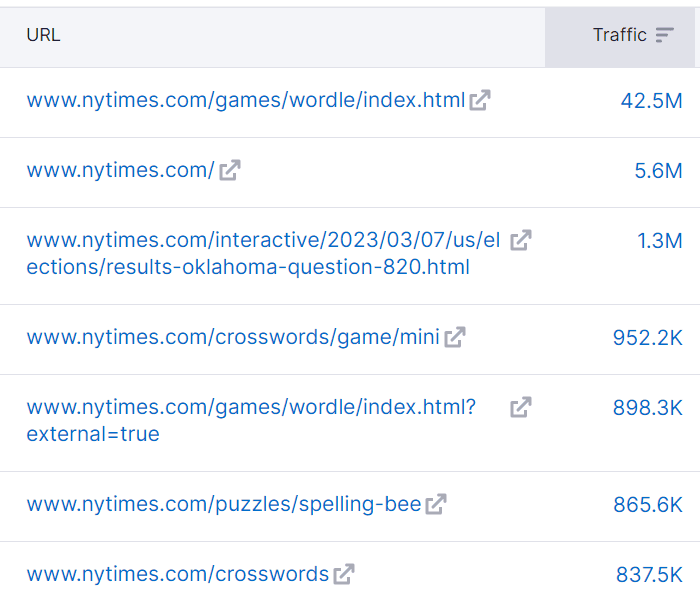
Financial news major Forbes also hosts a ton of tools on its website. Most of them are currency converters.
Its INR to $ converter page gets them 375.5k organic traffic per month. And they seem to have 2000 such pages.
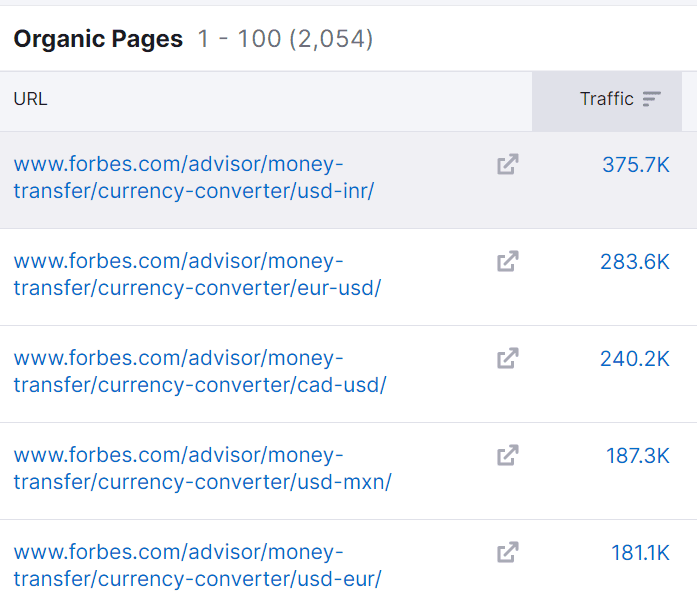
Unlike other businesses which have to create content separately to attract organic traffic to their website, media houses just have to put in place practices to take advantage of the troves of content they publish daily.
One such activity is to have category pages that list news items on a particular topic. Here on-page SEO sanity comes to play. All publications have to ensure is to have the right meta title, description and heading tags.
They then get to rank for keywords like ‘india news’, ‘us election news’, ‘covid news’.
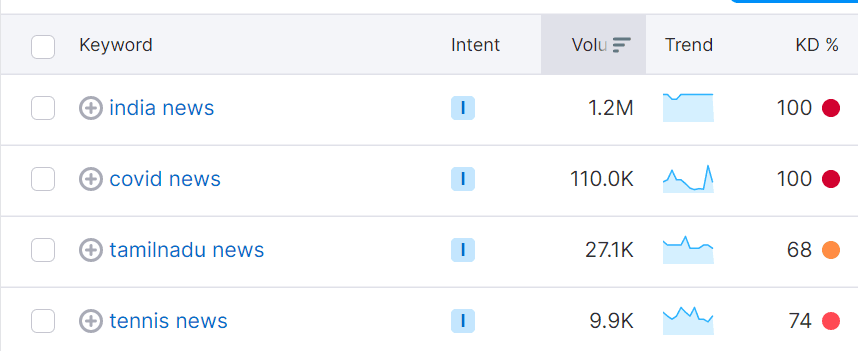
Indian Express and many other top websites have ensured this.
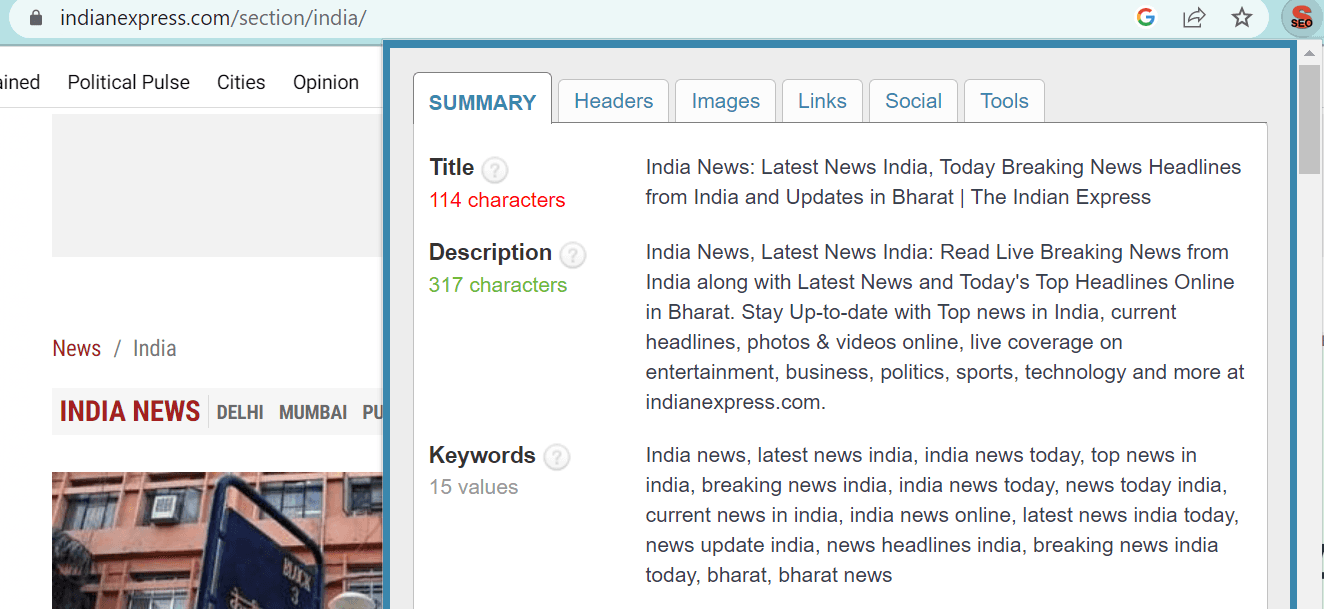
https://indianexpress.com/about/ - the subfolder which has all such category pages gets about 5.4M traffic every month from India.
Apart from having separate infographic pages, news publications also use interactive graphs in their news articles that they constantly update.
For example, Bloomberg’s article on Covid vaccine tracker gets them 94.4k traffic per month.
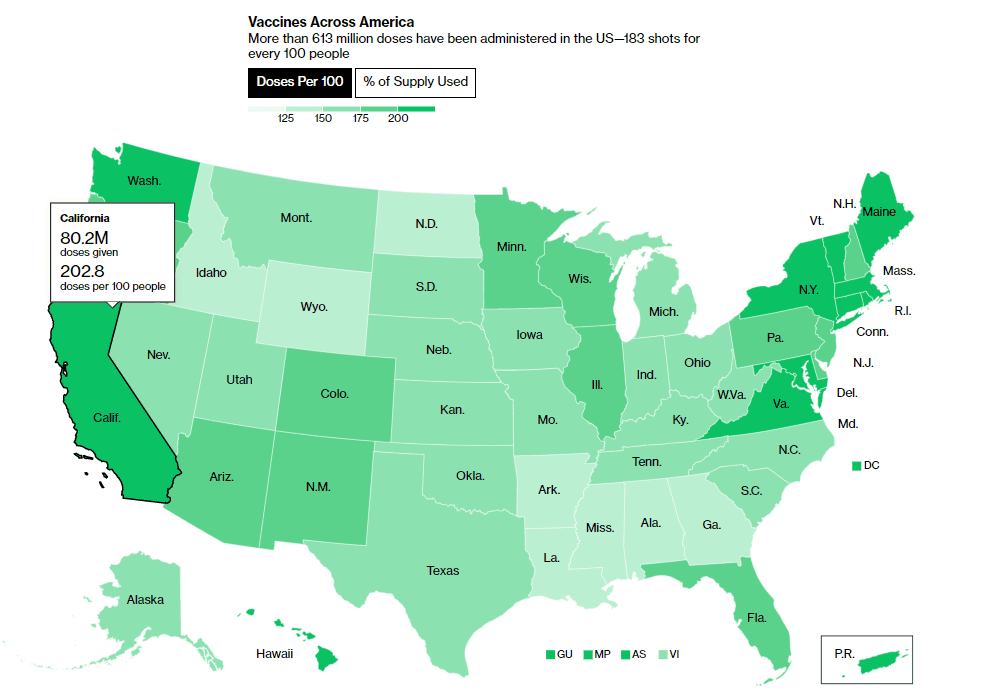
Indian Express’s election page on Uttar Pradesh has interactive graphics and it gets 13.3k traffic per month. Such interactive elements prompt the user to spend more time on the page -- a crucial metric for Google Rankings.

More and more publications are writing ‘SEO-first’ articles as I would like to call them. Example:
13 Great Tools Brands Can Use To Build Viral Campaigns by Forbes, and Top 10 Web Development Companies in India 2023 by The Hindu. These articles are distinctly different from news articles as they are created with the sole aim of bringing in more organic traffic.
The Hindu says this article is sponsored, and the Forbes article also is created by a Forbes Council Member (the membership is fee-based). With very high domain rankings, news publications have a very high chance of ranking for any type of content. This seems to be an attempt to monetize this advantage.
From many conversations with reporters and sub-editors, SEO does not have a great reputation among journalists. Marketing professionals in media houses say that it is not easy to implement SEO-first practices.
But Prasanna, the Assistant Editor at SouthFirst sees why SEO could be a game-changer for digital publications. Media houses invest in expensive opinion pieces from thought leaders across the country, but if they do not get any online visits, what is the point?, he asks. He says small changes to the SEO title, description, sub-headings and alt text have resulted in a sharp rise in Google rankings in just 2 days.
An obvious plug: Get in touch with Freshboost to know how much traffic such exercises could bring to your website
Great substack publications:
Helpful articles from this
(Note: The author Barry Adams is a News SEO legend, follow him on Twitter here)
Join Slack communities like: https://seoforjournalism.slack.com/, they are very helpful in solving queries and also offer endless inspiration.
Tools: Google Trends, SEMrush, Ahrefs (has a bunch of free tools), Keyword Explorer, Lowfruits.
Read more:
leveraging tech for
business growth
Cyces.